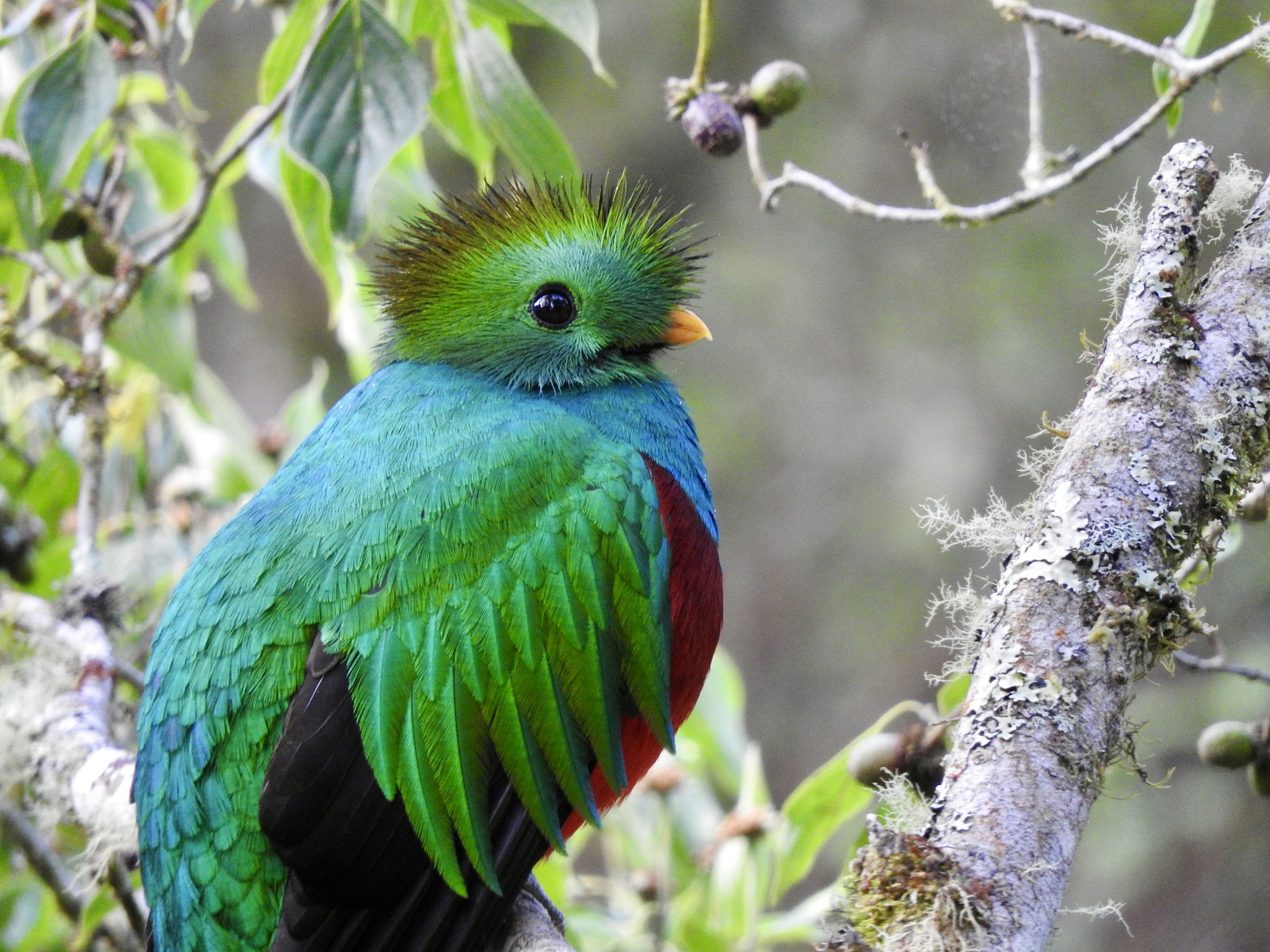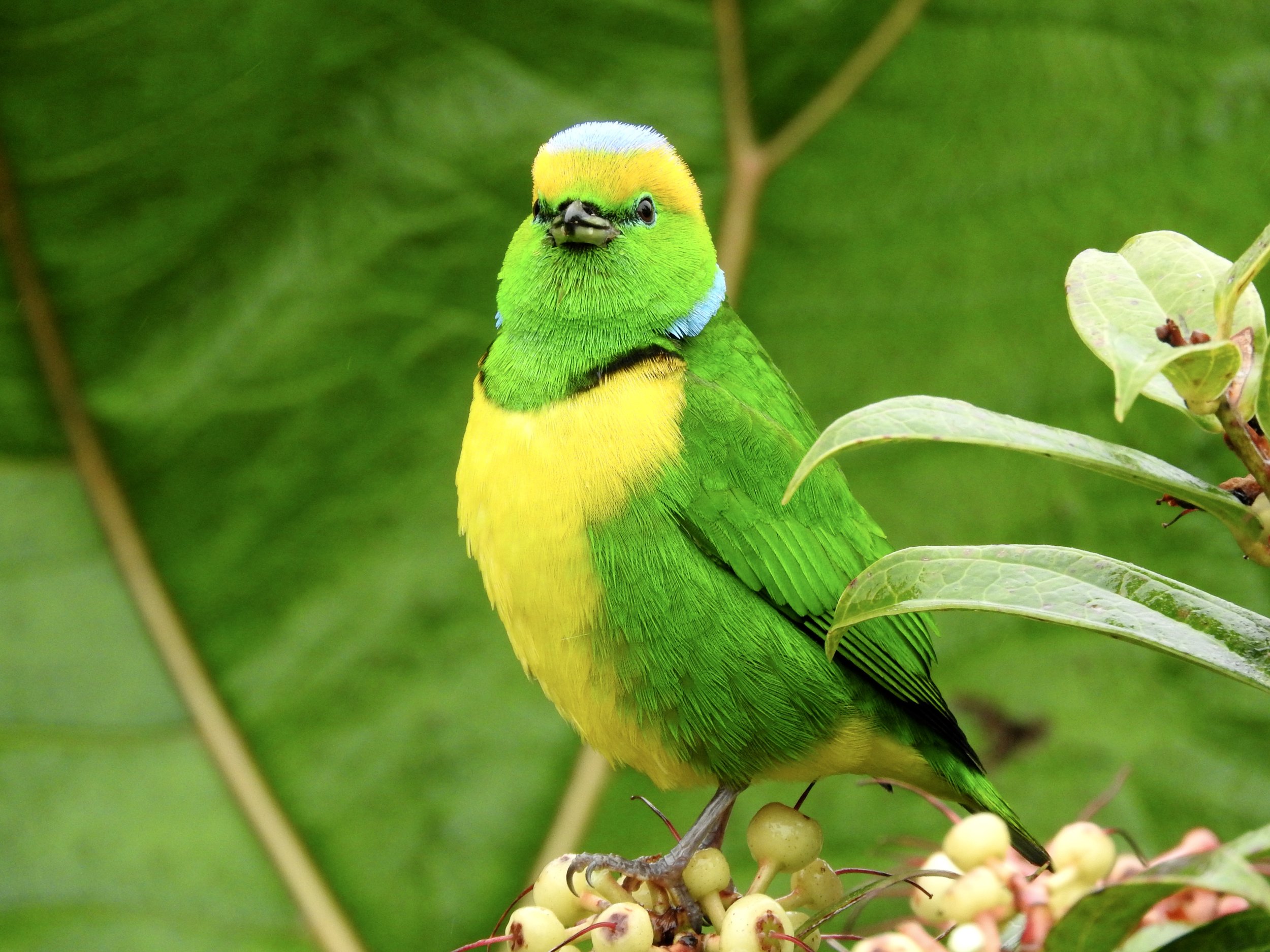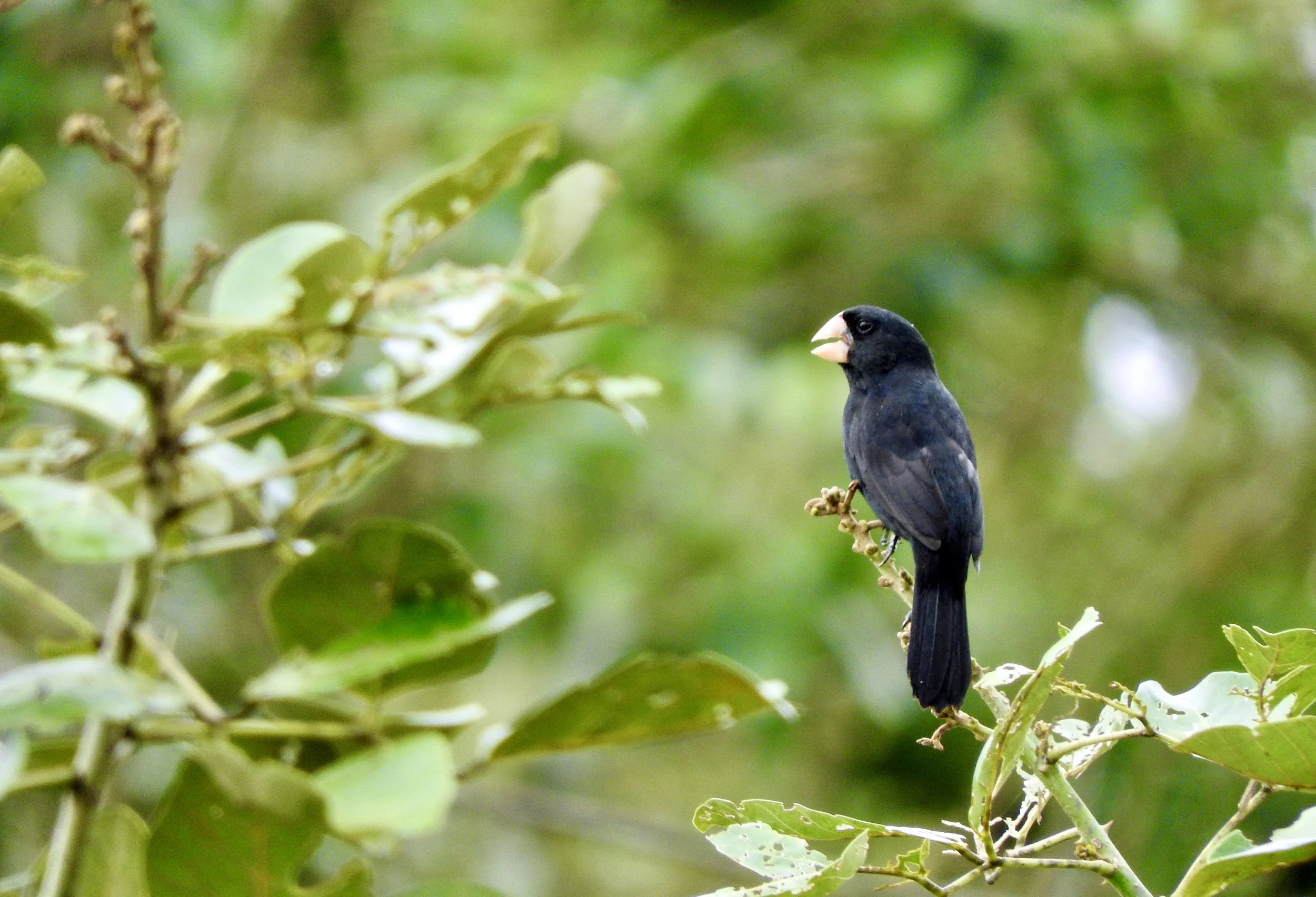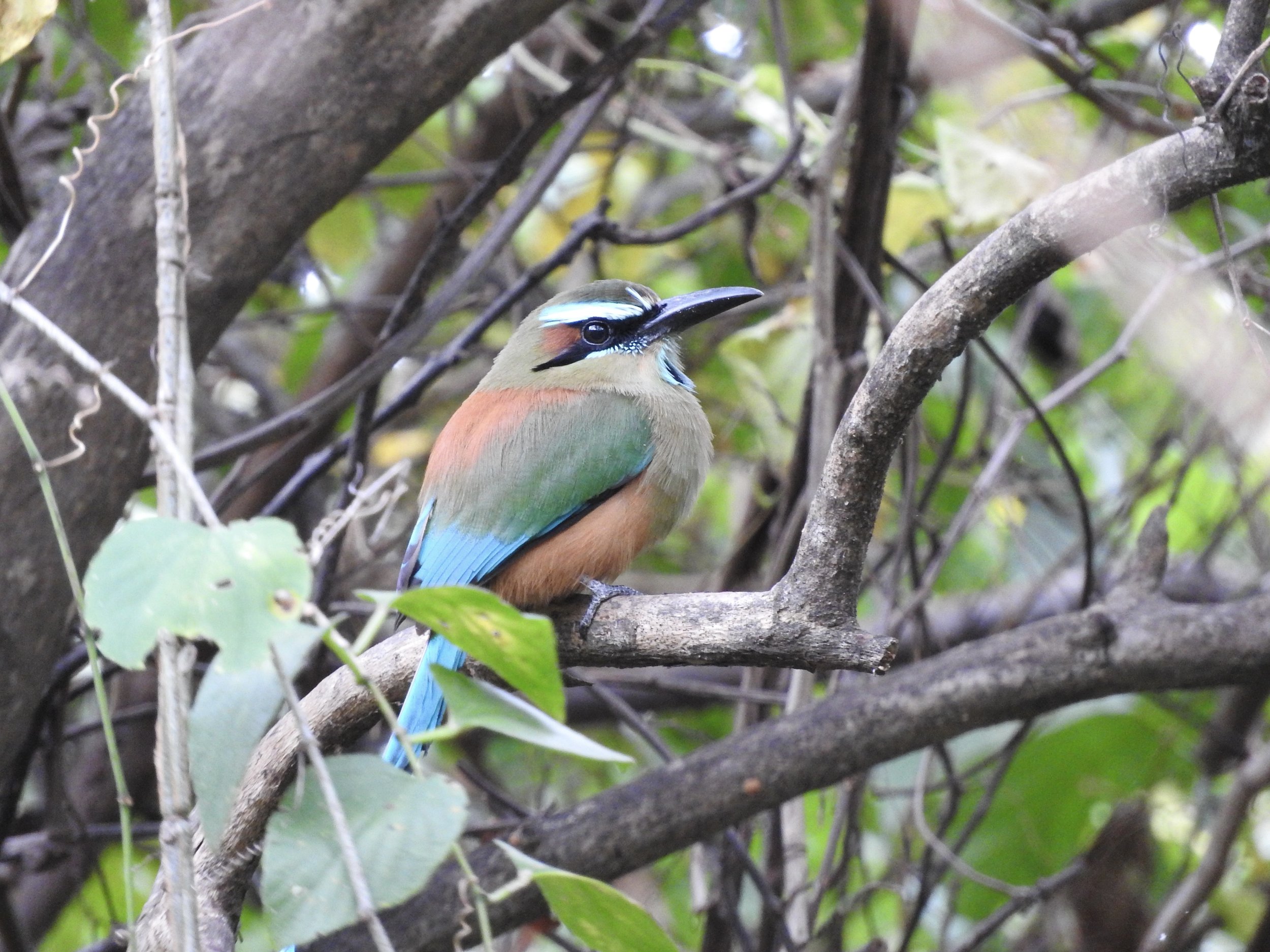Birding Costa Rica: Quetzals, Hummingbirds, and a Dipped Wood-Partridge
The Resplendent Quetzal
Hosts Diego Calderón and Chris Bell, took The Birders Show to Costa Rica. Here’s Part One of Chris’s trip diary for Field Notes.
Quetzal Quest: Flying to Costa Rica a Day Early
I flew out to Costa Rica one day early for our ICT (Instituto Costarricense de Turismo) FAM (familiarization) Trip. After studying the itinerary in detail, I saw that my chances of spotting the Resplendent Quetzal were quite slim, and I didn’t want to miss out on the opportunity to see this iconic bird in the flesh for the first time. So after a late Friday night arrival in San Jose, I headed straight up to Paraiso Quetzal Lodge near Los Quetzales National Park. The Fam Trip group wasn’t meeting until 7 pm, so I had all day on Saturday to grab some Talamanca endemic birds before the trip began in earnest.
I arrived at the lodge at 1 am and grabbed a few hours of sleep before my dawn quetzal quest. I woke to clear skies and a spectacular panoramic view of mountains and forests - my first daylight view of Costa Rica and a marvelous first impression of the country. After a quick local coffee prepared in my in-room coffee machine (a great detail that I noticed in most of the hotels we stayed at on this trip), I met my guide Erick, and we jumped in his car to start the quetzal hunt.
Dawn breaks over Paraiso Quetzal Lodge in Costa Rica. A perfect morning to search for Resplendent Quetzals
Paraiso Quetzal Lodge lives up to its name
Paraiso Quetzal Lodge is involved in an excellent collaboration with local farmers to help protect quetzal habitat and bring in resources through tourism - locals protect the forests around their homes and call in quetzal sightings to the Paraiso Quetzal guides. When the bird’s preferred food - aguacatillo - is fruiting, the birds will perch just meters from houses, making for excellent sightings. As we drove out of the lodge, Erick got a call, and we hightailed it down a side road.
We pulled up outside a small wooden house on a hillside and were immediately greeted by the sight of a male Resplendent Quetzal perched in a nearby tree. After spending so many years dreaming of seeing this bird, I was left momentarily speechless before a fellow tour member brought me back to earth with the muttered words: “I thought it would be bigger.” There’s just no pleasing some people.
The truly magical Resplendent Quetzal
Birding Fact: the Resplendent Quetzal was considered divine by pre-Columbian Mesoamerican civilisations like the Maya and Aztecs. It was associated with the snake god, Quetzalcoatl. It was a crime to kill a quetzal, although they were often captured, their long tail feathers plucked for headdresses, and then set free.
For the next 30 minutes, we watched as the quetzal made repeated visits to a fruiting aguacatillo tree just feet from the small balcony. I couldn’t believe that I was able to enjoy such close-up views, and Erick made the experience even better by providing his ‘scope to all the guests for high-quality digiscoped photos and videos, another great detail. I added a few more great lifers around the house, including the regional endemic Streak-breasted Treehunter and Spot-crowned Woodcreeper. I also got my best views of the trip of Black-cheeked Warbler. Ten lifers before breakfast - a little taste of what was to come!
The Wrenthrush and Lifers Galore
Erick and I jumped back in the car and headed towards the lodge for breakfast. As we pulled up, he asked if I’d seen Wrenthrush before (I definitely hadn’t!). So just before eggs and coffee, we found a spot in the parking lot and called in a very obliging Wrenthrush for some good views. One of my trickiest target birds down, and it still wasn’t 8 am. Cheers, Erick!
After wolfing down my breakfast (I mean, who could waste time eating when there are so many new and exciting birds to see!), I walked the trails around the reserve cabins for a few hours. The birds seemed impossibly relaxed around people, and I enjoyed truly crippling views of Black-and-yellow Silky Flycatcher, Golden-browed Chlorophonia, Large-footed Finch, and Yellow-thighed Brushfinch.
Golden-browed Chlorophonia was one of my main target birds. Needless to say, I was pretty happy with the view I got!
After a few hours of gentle birding around the lodge, I headed to the restaurant balcony to enjoy the hummingbird feeders. These feeders are perhaps the best place in Costa Rica to enjoy close-up views of local specialties like Fiery-throated Hummingbird, Talamanca Hummingbird, Volcano Hummingbird, and White-throated Mountain Gem. I spent a happy few hours with the hummers and a few more cups of local coffee. An obliging Long-tailed Silky Flycatcher even showed up to treat me to eye-level views of another big target, while a pretty little Hairy Woodpecker sprawled out on a sun-kissed mossy branch to dry out after a brief rain shower. The birding just kept getting better and better.
Birding Fact: despite their name, silky-flycatchers (Ptiliogonatidae) are not related to the Old World flycatchers (Muscicapidae) and the tyrant flycatchers (Tyrannidae). In fact, the Black-and-yellow Silky-flycatcher’s diet consists almost exclusively of fruit.
A Black-and-yellow Silky-flycatcher eating fruit, not flies
Around lunchtime, two more of the ICT Fam Trip invitees showed up: Jose Castaño from Colombia and Julian Parsons from South Africa. I hung out with them for another hour or so, picking up some essential targets for their lists in the process, before we piled into a cab and drove back towards San José. We had scheduled an afternoon stop at Casa Dowii, a reserve run by Costa Rican birder and tour operator Serge Arias.
Casa Dowii: Spangle-cheeked Tanagers and Buffy-crowned Wood-Partridges
The main target bird at Serge’s place - aside from the eponymous Tangara dowii, or Spangle-cheeked Tanager - are the Buffy-crowned Wood-Partridges that regularly visit his garden feeders. On arrival, we were greeted with the news that the birds had just visited the feeders, so we settled in for a potentially long wait in the comfortable viewing area. As we ate a delicious lunch of local dishes, a Buff-fronted Quail-Dove (another big target bird) made repeated visits, but the wood-partridges remained elusive. Thankfully the conversation was excellent, and the locally-brewed craft beers even better.
A gorgeous Long-tailed Silky-Flycatcher from the hummingbird balcony at Paraiso Quetzal Lodge
Unfortunately, at this point, the rain set in, and the strong gusts of wind left us feeling less and less hopeful of a last-minute wood-partridge appearance. Eventually, as the light failed and our deadline drew ever closer, we were forced to call time on the day’s birding. Wood-partridge dipped (for the third time in Julian’s case), but a day of beautiful birds and many lifers nonetheless.
Birding Fact: ‘to dip’ or ‘dip out’ is birding slang for when you miss a bird that you are looking for. It’s an expression often associated with twitchers, a term typically used for those who travel long distances in pursuit of previously-located rare birds.
We got into our San José hotel just in time for the first team dinner, which took place somewhat incongruously in the hotel's casino. It was my first time meeting many of the group (more on them in upcoming blogs), but my Birders Show co-host Diego Calderon was there, so there was at least one familiar face. After a few beers, we all hit the sack, ready for the trip to start the next day. I could hardly contain my excitement after the birding quality of my first day in Costa Rica. Pura Vida indeed!
Celebrating my mega-lifer Resplendent Quetzal with Erick from Paraiso Quetzal Lodge













